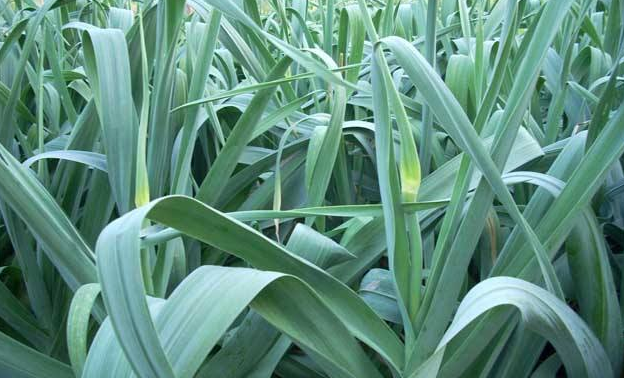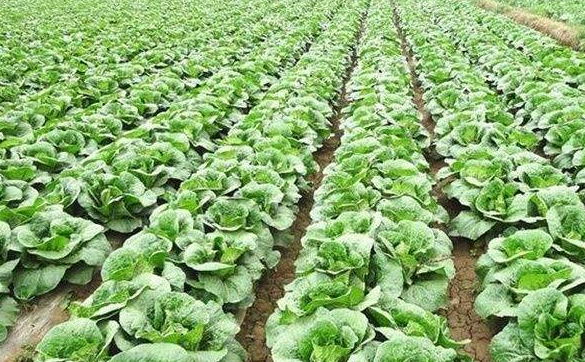Garlic interplanting spinach, garlic interplanting Chinese cabbage planting technology
Garlic interplanting spinach and multi-cropping Chinese cabbage are made of garlic among the spinach, while making full use of the characteristics of early harvesting of spinach and garlic, and high-yield cultivation mode of planting Chinese cabbage in the open space after harvest.
After five consecutive years of trials, the planting model of 667 square meters has an output value of 4,650 to 5,820 yuan, more than twice that of a single crop, and the economic benefits are significant. The specific methods of cultivation will now be described in detail:

First, garlic seeding spinach cultivation points
1, soil preparation
Selecting the above-mentioned fertility and organic matter-rich irrigated land, the former carp is better for leguminous or gramineous crops, and the 667 square meters before the cultivated land is applied to fully decomposed high-quality farmyard manure 4-6 tons and diammonium 25-28 kg. Urea 10 ~ 15 kg, potassium sulfate 6 ~ 8 kg, oil residue 40 kg, the depth of cultivated land 25 ~ 30 cm, the quality of the land preparation up to six words.
2. Selection
For planting garlic, you should choose six-petal red or purple-skinned garlic. The spinach variety is Hong Kong Yinong.
3. Sowing
The garlic is sown in the late autumn, and is planted in the upper and middle of November, that is, when the night is frozen. The line spacing is 20 cm, the plant spacing is 15 cm, the sowing depth is 4 to 5 cm, and the 667 square meters seedlings are 2.2 to 23,000. After sowing, the spinach is placed in the garlic line. The paved plot will prevent human and animal trampling in winter.
4. Field tube
The plots that were broadcast in the first year began to germinate in the middle and late March of March. In the middle and late April, the spinach entered a prolonged period. At this time, the garlic was still in the seedling stage. If the soil was good, no watering was needed, and spinach was started in mid-May. After the combination of cultivating and topdressing, the garlic is topped with water. From the end of May to the beginning of June, the garlic is poured into the second water before the bolting, and the third water is poured after the moss is collected. After collecting the moss for 20 to 25 days, that is, July. Garlic in the middle.

Second, the main points of cultivation of Chinese cabbage
Fertilize
After the garlic is harvested, it is properly watered. When the soil surface is slightly dry, 667 square meters of high-quality farmyard manure is 3 tons, diammonium 10 kg, urea is 15-18 kg, potassium sulfate is 2 to 4 kg, and the depth of cultivated land is 25-30 cm.
2. Selection
Choose anti-virus and leaf blight resistant Chinese cabbage variety Fengkang 78.
3. Sowing
From July 25th to August 5th, artificial dredging was used. The plant spacing was 40×40 cm, the sowing depth was 2~2.5 cm, the 667 square meters used 20 g, and the seedlings were 4100.
4. Field tube
After emergence of Chinese cabbage, 3 to 4 leaf seedlings, seedling height 7 to 8 cm fixed seedlings, fixed seedlings after topdressing, each plant is applied with 200 g of diammonium phosphate plus 100 g of urea, and 200 g of oil residue is applied during the core period. Chinese cabbage is poured 4 to 6 times in the whole growth period. The main pests are cabbage jumping armor and aphids, which can be controlled by pyrethroid pesticides. The disease is mainly soft rot of cabbage. At the beginning of the disease, 667 square meters with 72% agricultural streptomycin WP 3000 times solution and 5% bactericidal WP 400 times solution with potassium dihydrogen phosphate 100 grams, zinc sulfate 10 grams, spray once every 7 to 10 days, even spray 2 to 3 times.
5. Harvest
It will be harvested from late September to early October.
Summary: Pay attention to the choice of varieties, but also pay attention to the time of cultivation, pay attention to deep tillage and fertilization when replanting.
Imported Premium Fire Retardant
Flame retardants, functional auxiliaries endowed with inflammable polymer flammability, mainly designed for flame retardancy of polymer materials; There are many types of flame retardants, which can be divided into additive flame retardants and reactive flame retardants according to their usage.
The additive type flame retardant is added to the polymer by mechanical mixing method to make the polymer flame retardant. At present, the additive type flame retardant mainly includes organic flame retardant and inorganic flame retardant, halogenated flame retardant (organic chloride and organic bromide) and non-halogenated flame retardant. Organics are some flame retardants represented by bromine, phosphorus and nitrogen systems, nitrogen systems, red phosphorus and compounds, while inorganic flame retardants are mainly antimony trioxide, magnesium hydroxide, aluminum hydroxide and silicon systems.
Imported Premium Fire Retardant,Flame Retardant Cresyl Diphenyl Phosphate,Plasticized Flame Retardant,Flame Retardant Abs
Xingbang High Molecular Materials Co., Ltd. , https://www.chemicaladditive.com